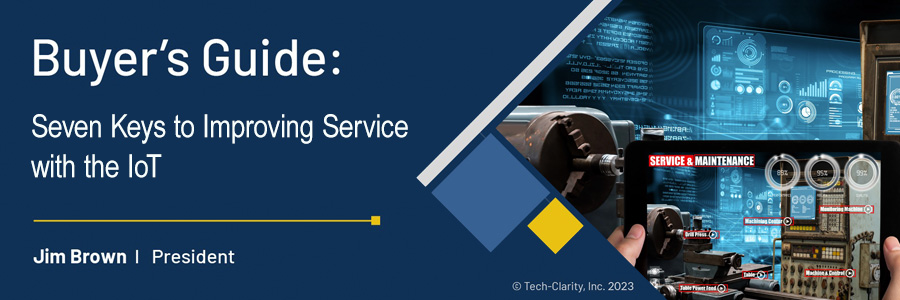What Is Remote Condition Monitoring and How Does It Work?
Remote monitoring of industrial assets’ complex physical equipment has proven its value across a range of verticals, from agriculture to healthcare. But despite its widespread adoption, remote monitoring is not universally understood. This may be in part due to its nomenclature, which can suggest commercial security monitoring, or consumer-focused vehicle monitoring. As companies seek to drive value through more reliable and digital-laden products, implementing remote monitoring will become increasingly mandatory to compete. Early adopters have already established an early advantage to position themselves with best-in-class service.
For those at the start of their journey, there is still time to catch up to leaders. This post explores the following questions: What is remote monitoring? How does it work? And what are its benefits?
Define remote condition monitoring
Remote monitoring is the ability to view machine status, performance, and behavior from a distance. This is chiefly accomplished through a combination of Internet of Things (IoT) technology and cloud computing to track machine performance. This allows an asset that is on-site in a factory, hospital, on the road, or out in the field, to be visible to parties responsible for preventing downtime, or in the event of unplanned downtime, accelerating appropriate service.
How does remote monitoring work?
Historically, machine data is captured on an ongoing basis, but the review of that data is done incrementally. The frequency that status and performance data is reviewed will depend on the cost of the asset, its age and durability, and the potential impact resulting from downtime. Maintenance and service technicians may review data and perform direct inspections, based on what metrics are telling them.
By contrast, remote monitoring relies on three key components: connectivity to collect data, a place to process and store data, and mechanisms for notifying and presenting data in an actionable way.
Remote monitoring starts with machine sensors that are attached to the equipment that relay a constant, enormous stream of data. For newer equipment, much of this connectivity is being designed into the product. For older assets, sensors and connectivity are added onto existing structures. Collecting this data requires industrial connectivity and is best managed through a standardized industrial connectivity system designed to accommodate a complex, heterogeneous environment and support an IIoT platform.
The next step is the processing and storage of data. These metrics may be sent directly to the cloud, or in instances where the data is substantial enough, it is processed on the edge, transmitting actionable data to the cloud. Ideally, an IIoT platform is taking custody of this data, so that it can be used in remote monitoring and analytics applications.
The third component in a remote monitoring apparatus is the delivery of actionable data. This may include dashboards, applications, or mobile notifications; the exact form is usually determined by the nature of the machine, the status or behavior being tracked, and what a service response might look like. The common element here is that monitoring applications are delivering any actionable information in real-time. Remote monitoring solutions built on the leading applications will often leverage additional intelligence—such as intelligent queueing/routing of notifications, geospatial directions to the asset in need, and even service instructions.
What role does remote conditioning monitoring play in optimizing service?
In the past, once an industrial product was sold to a customer, the manufacturer lost all visibility into how the product was performing. A combination of increasing complex, digitally-enhanced products, and market competition has required makers of these products to use service as a way to close business, retain customer loyalty, and drive growth through value. This is accomplished through service innovation, which is dependent on remote monitoring as a cornerstone. There are three major approaches: predictive maintenance, remote service, and more comprehensive service-based transformations to business.
Predictive maintenance
Predictive maintenance ensures that an asset doesn’t experience unplanned downtime or failure. This is done through a constant monitoring of physical conditions—including status, performance, and stresses placed upon a piece of equipment. Using predictive maintenance to identify and address performance indicators before they become problems, Zeiss—a leading microscopy manufacturer—has reduced calibration-related downtime for its customers by 92%.
Remote service
Even when issues can’t be proactively prevented, remote monitoring can help rapidly resolve issues that do occur, accelerating mean time to repair (MTTR) and first-time fix rates (FTFR). As mentioned earlier, effective remote monitoring requires connectivity and an IIoT platform. These same technologies also enable remote service when applicable. Depending on the nature of the service needed, this can take the form of momentary remote operation, remote delivery of software patches and fixes, or administering remote support to onsite technicians.
Remote monitoring can also accelerate onsite service visits to improve MTTR and FTFR, by providing technicians with specific actionable data.
Service transformation
Remote monitoring is opening up new service-based business models, including product as a service, consumable replenishment, and usage-based billing. These are typically not the first step for an industrial company, but rather a longer-term strategy undertaken by those who have successfully implemented incremental IIoT-enabled services.
For now, remote monitoring’s biggest achievements are in drastically improving service—embodied in faster MTTR and huge reductions in unscheduled downtime—while massively cutting the cost of delivering it.
For practical advice on integrating remote monitoring into your service ecosystem, read our buyer’s guide, Seven Keys to Improving Service with the IoT.
